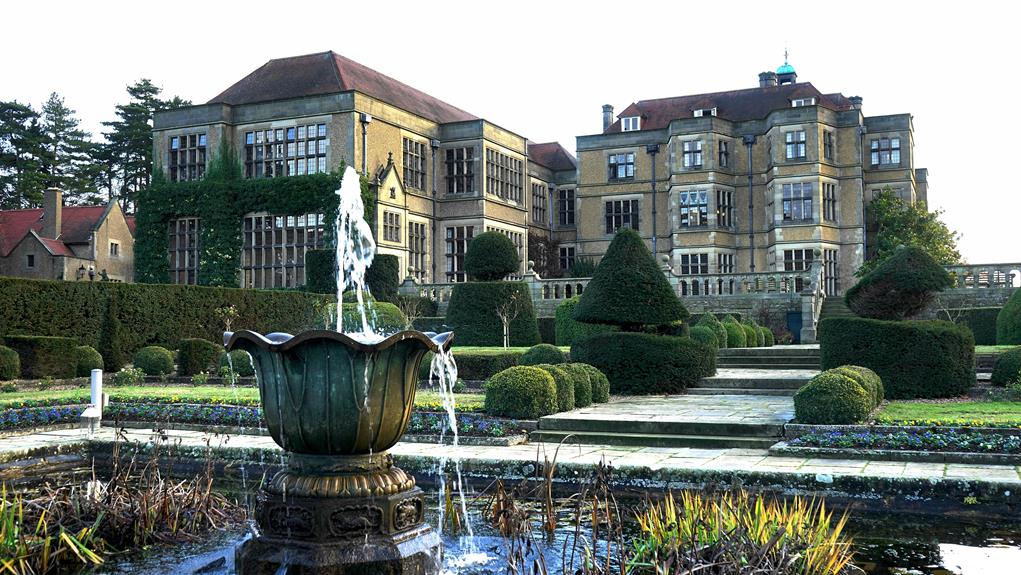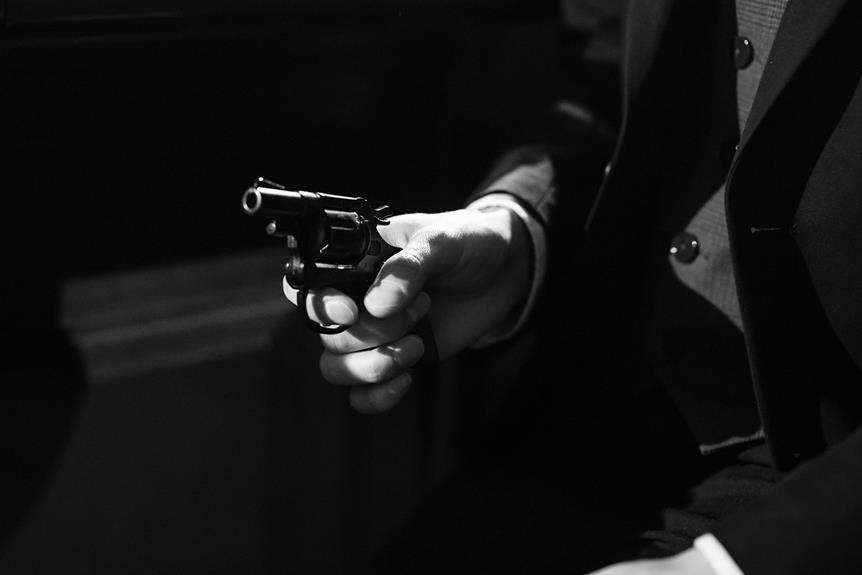The Ripper Museum in the UK stands as a unique institution that explores the mysterious past of Jack the Ripper, presenting visitors with a compelling glimpse into the haunting crimes that gripped Victorian London. As one navigates through the museum's exhibits, a sense of intrigue and unease permeates the air, drawing attention to the meticulous attention to detail in the curation of artifacts and immersive settings. However, beneath the surface of this seemingly straightforward exploration lies a web of controversies and complexities that challenge perceptions and spark discussions about ethics, historical accuracy, and the implications of dark tourism in modern society.
Key Takeaways
- Preserves artifacts related to Jack the Ripper.
- Offers interactive crime scene displays from late 19th century Whitechapel.
- Recreates the Victorian London setting of the late 19th century.
- Faces controversies regarding the commodification of violence.
- Provides immersive experience into Jack the Ripper's history and the Victorian era.
History of Jack the Ripper
The history of Jack the Ripper, a notorious unidentified serial killer who terrorized the Whitechapel district of London in the late 19th century, remains shrouded in mystery and intrigue to this day. The identity of Jack the Ripper has puzzled investigators and historians for over a century, with numerous suspects and theories proposed to unravel the enigma behind the brutal murders attributed to this elusive figure.
Among the suspects considered in the Jack the Ripper case are individuals like Montague John Druitt, a barrister of the time whose suicide shortly after the last of the canonical five Ripper murders raised suspicions, and Aaron Kosminski, a Polish immigrant and one of the more recent suspects based on DNA analysis of a shawl found at one of the crime scenes. Other theories suggest the involvement of prominent figures of the era, including members of the royal family or well-known physicians.
Theories surrounding Jack the Ripper range from the idea that he was a skilled surgeon due to the precision of the mutilations on the victims, to speculation that the murders were part of a larger conspiracy. Despite extensive investigations and modern forensic techniques, the true identity of Jack the Ripper remains a subject of intense debate and fascination, contributing to the enduring allure of one of history's most infamous figures.
Museum Exhibits and Artifacts
Exploring the Ripper Museum's collection of exhibits and artifacts provides a vital link to the haunting legacy of Jack the Ripper in the Whitechapel district of London. The museum meticulously preserves a variety of artifacts related to the infamous serial killer, offering visitors a unique insight into the chilling events of the late 19th century. From original police reports and witness statements to personal belongings of the victims, every item on display is carefully curated to immerse guests in the historical context of the Ripper murders.
Artifact preservation is a key focus of the museum, ensuring that these pieces of history remain intact for future generations to study and understand. The exhibit curation process involves in-depth research and collaboration with experts to present a detailed narrative that sheds light on the Ripper's heinous crimes and their impact on society.
In addition to showcasing artifacts, the museum also prioritizes visitor engagement through interactive displays and educational programs. These initiatives aim to educate the public about the Ripper's reign of terror while sparking conversations about crime, justice, and historical accuracy. By offering a platform for learning and reflection, the Ripper Museum plays an essential role in keeping the memory of Jack the Ripper alive while honoring the victims of his brutal killings.
Interactive Crime Scene Displays
The Ripper Museum brings visitors closer to the chilling atmosphere of Jack the Ripper's legacy by offering interactive crime scene displays that transport individuals back to the late 19th century Whitechapel district of London. These displays provide a hands-on experience that allows guests to immerse themselves in the world of one of history's most notorious serial killers. By incorporating forensic techniques used during that era, visitors can gain insight into the investigation methods employed at the time.
The interactive crime scene displays offer a unique opportunity for individuals to understand the complexities of investigating serial killers in a bygone era. Through detailed recreations of crime scenes and utilizing authentic tools and techniques, visitors can explore the forensic processes used to analyze evidence and solve crimes. This hands-on approach not only educates but also captivates audiences by allowing them to step into the shoes of investigators working to apprehend Jack the Ripper.
The museum's focus on interactive crime scene displays serves to engage visitors on a deeper level, fostering a greater appreciation for the historical significance of forensic techniques in solving crimes. By exploring the macabre world of serial killers through these interactive exhibits, guests have the opportunity to learn about the challenges faced by law enforcement in the late 19th century and the evolution of forensic science in the pursuit of justice.
Victorian London Setting
Nestled within the Ripper Museum is a meticulously crafted portrayal of the Victorian London setting, meticulously designed to transport visitors back in time to the atmospheric streets of the late 19th century. The Victorian era was characterized by rapid industrialization, stark social divides, and a burgeoning interest in crime and detective work. The museum's recreation of this period immerses guests in the sights and sounds of a bygone era, with gas-lit alleyways, horse-drawn carriages, and the hustle and bustle of a city on the brink of modernity.
The crime scene displays within the museum offer a chilling glimpse into the darker side of Victorian London. Visitors can step into meticulously recreated scenes of infamous crimes, complete with period-accurate details and evidence. The meticulous attention to historical accuracy lends an air of authenticity to the exhibits, allowing guests to experience firsthand the fear and intrigue that gripped London during the time of Jack the Ripper.
As visitors wander through the Victorian streetscapes and explore the intricately staged crime scenes, they are transported back to a time of mystery and suspense. The museum's dedication to recreating the atmosphere of Victorian London makes certain that guests leave with a deeper understanding of the city's history and the shadowy world of crime that lurked beneath its surface.
Controversies and Criticisms
Amidst its portrayal of Victorian London, the Ripper Museum in the UK has faced controversies and criticisms that have sparked debates within both historical and ethical circles. One of the primary ethical concerns surrounding the Ripper Museum is the commodification of violence and tragedy. Critics argue that turning the gruesome history of Jack the Ripper into a tourist attraction trivializes the suffering of the victims and their families. This raises questions about the ethics of profiting from a narrative that is rooted in real-life tragedies.
Another point of contention is the authenticity of the museum's exhibits and information. Some historians and experts have raised doubts about the accuracy of the narratives presented in the museum. The concern is that by prioritizing entertainment value over historical truth, the Ripper Museum may be perpetuating myths and misconceptions about the Jack the Ripper case and Victorian London.
Moreover, critics have also pointed out that the museum's focus on the sensational aspects of the Jack the Ripper story can overshadow the broader historical context of the time period. By reducing Victorian London to a backdrop for a serial killer story, the museum risks oversimplifying and distorting a complex historical era. These controversies and criticisms highlight the delicate balance between historical interpretation, ethical considerations, and the presentation of authenticity in museum settings.
Visiting Information and Hours
Located in the heart of London, the Ripper Museum provides visitors with a unique opportunity to explore the chilling history of Jack the Ripper and Victorian England. The museum offers several options for visitors to access its exhibits. Admission ticket prices vary depending on age, with discounts often available for students, seniors, and groups. It is advisable to check the museum's official website for the most up-to-date information on ticket prices and any available promotions.
The Ripper Museum operates on specific hours, typically opening in the morning and closing in the evening. Visitors should plan their trip accordingly to make sure they have enough time to explore the museum thoroughly. Additionally, the museum occasionally hosts special events such as guided tours, guest lectures, and interactive workshops. These events provide a deeper insight into the history of Jack the Ripper and the Victorian era, offering visitors a more immersive experience.
For those interested in attending special events, it is recommended to book tickets in advance as they tend to sell out quickly. The Ripper Museum's website often contains information about upcoming events, including details on how to purchase tickets. By checking the museum's website regularly, visitors can stay informed about any new exhibitions, special events, or changes to operating hours.
Impact on True Crime Tourism
The Ripper Museum's existence reflects a broader trend in the tourism industry towards capitalizing on the darker aspects of history, raising important questions about the balance between education, entertainment, and ethical considerations in the domain of true crime tourism.
The Ripper Museum's portrayal of Jack the Ripper's legacy and the Victorian era has greatly influenced the rise of true crime tourism in London. The museum's focus on the notorious serial killer's crimes, the dark alleyways of Whitechapel, and the overall atmosphere of fear and mystery from the Victorian era has attracted visitors intrigued by the macabre and fascinated by true crime stories.
| Impact on True Crime Tourism | |
|---|---|
| Ethical Implications | The museum raises questions about the ethical implications of glorifying a serial killer's actions for entertainment. |
| Dark Tourism | It taps into the phenomenon of dark tourism, where visitors are drawn to sites associated with death and tragedy. |
| Commercialization | The commercialization of Jack the Ripper's crimes through merchandise and tours has sparked debates about the ethics of profiting from such gruesome history. |
| Sensationalism | The sensationalism surrounding Jack the Ripper's story has led to an increase in media coverage and public interest, further fueling true crime tourism. |
| Cultural Impact | The museum's influence extends beyond tourism, impacting how society engages with dark histories and the commodification of violence. |
Frequently Asked Questions
Are There Any Ghost Sightings Reported at the Ripper Museum?
Reports of haunted tales and supernatural encounters have intrigued many visitors at various locations worldwide. These ghost sightings often add an eerie element to historical sites, generating interest and speculation among enthusiasts.
Whether genuine or attributed to folklore, these stories contribute to the mystique surrounding certain destinations. The allure of such paranormal phenomena can captivate those seeking an unconventional glimpse into the unknown, fostering a sense of wonder and curiosity.
How Accurate Are the Crime Scene Recreations in the Museum?
When considering the accuracy of crime scene recreations in historical museums, it is important to evaluate the level of forensic accuracy and historical context provided.
These recreations often aim to transport visitors back in time, offering a glimpse into the past through meticulous attention to detail.
Are There Any Hidden Rooms or Secret Passages in the Museum?
When considering the presence of hidden tunnels or secret passages in a museum, the architectural design plays a pivotal role. Architects may incorporate such features for various reasons, such as security, historical significance, or practicality.
Hidden rooms and secret passages are often integrated seamlessly into the overall structure, blending into the surroundings to maintain the aesthetic integrity of the building. These architectural elements can add an element of mystery and intrigue to the space, enhancing the visitor experience.
Do Visitors Ever Experience Paranormal Activity During Their Visit?
Visitors to historical sites sometimes report haunted encounters, sparking debate among skeptics and believers. Paranormal investigations often aim to shed light on such claims, using scientific methods to explore alleged phenomena within a historical context.
The intersection of folklore, history, and paranormal activity can create a fascinating backdrop for those interested in exploring the unknown. This blend of curiosity and skepticism fuels ongoing discussions around the world.
Has the Museum Been Featured in Any TV Shows or Movies?
The museum has garnered significant attention from media outlets, being featured in numerous TV shows and movies. Its appearances have helped elevate its profile, contributing to its cultural impact.
Celebrity endorsements have also played a role in promoting the museum, further solidifying its status as a popular destination. These external validations have enhanced the museum's reputation and attracted a diverse range of visitors seeking to experience its unique offerings.
Conclusion
To sum up, the Ripper Museum in the UK offers a unique and immersive experience delving into the history of Jack the Ripper. Through its exhibits, artifacts, and interactive displays, visitors are transported back in time to Victorian London to explore the dark world of this notorious serial killer. Despite facing controversies, the museum plays a vital role in educating the public about the challenges of law enforcement during that era.
How can we continue to learn from the past to prevent such atrocities in the future?


